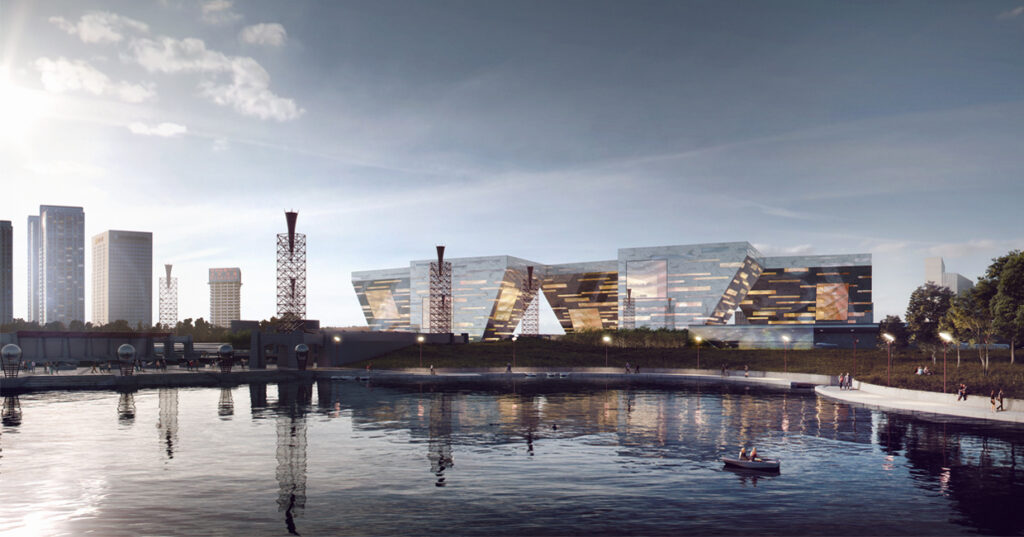Founded in 1986, Schmidt Hammer Lassen is known around the world for its iconic, highly sustainable cultural and civic architecture, including The Black Diamond, the extension to the Royal Library in Copenhagen; ARoS Museum of Art in Aarhus, Denmark’s second-largest city; theKatuaq Cultural Centre in Nuuk, Greenland; and the International Criminal Court in The Hague.
The firm recently won a global competition to design the world’s largest library – the 1.2 million-square-foot Shanghai East Library – and was recently selected to design the University of Bristol Library. Built projects in the U.K. include the University of Aberdeen Library and the City of Westminster College, London.
“By combining Perkins+Will’s 83-year legacy of design excellence with Schmidt Hammer Lassen’s illustrious Danish design pedigree, the united firms will make even greater contributions to the canon of cultural and civic architecture, according to Perkins+Will CEO Phil Harrison”
By combining Perkins+Will’s 83-year legacy of design excellence with Schmidt Hammer Lassen’s illustrious Danish design pedigree, the united firms will make even greater contributions to the canon of cultural and civic architecture, according to Perkins+Will CEO Phil Harrison.
“Part of what makes this partnership so special is that Perkins+Will and Schmidt Hammer Lassen share a common set of values: design excellence, sustainability, innovation, and the highest level of client service,” says Phil. “We also maintain the same design ethos, believing that exceptional architecture is always democratic and in the service of the greater good. We’re compatible at every level.”
Bjarne Hammer, founding partner of Schmidt Hammer Lassen agrees, adding: “Our firms share a clear mission: through architecture and design, we make a positive difference in the world and in the lives of others. We both believe strongly in the transformative, healing power of design to address some of the most pressing social and environmental issues of our time. And, we both thrive in a design culture that encourages collaboration.”
In addition to a shared vision and purpose, the two firms have symbiotic market strategies. Perkins+Will aims to diversify its talent, expand its cultural and civic practice, and reinforce the caliber of its design portfolio. At the same time, Schmidt Hammer Lassen aims to expand into new geographic markets, grow its client base, and apply groundbreaking design research to practice.
“The merger comes at a fortuitous time for us in London, in particular, as we focus on expanding our architectural practice in the U.K. and mainland Europe,” says Steven Charlton, managing director of Perkins+Will’s London office. “In Schmidt Hammer Lassen, we have found partners who share our vision for thought-provoking, inspirational design and our desire to bolster our combined presence in international markets.”
“We want to be known as a company that is both design-driven and client-focused, as a firm that produces extraordinary designs and delivers them with extraordinary efficiency. Merging with Perkins+Will enables us to maintain this critical part of our identity while having the support, technology, and reach of a much larger organization,” says Schmidt Hammer Lassen CEO Bente Damgaard. “It’s a fantastic opportunity.”
Perkins+Will’s global platform also provides a host of benefits to Schmidt Hammer Lassen’s international clients, Damgaard says, because they now have all of the resources, talent, and expertise-including research-they need within a single firm. This streamlines collaboration, facilitates communication, and ensures smooth project delivery.
Pictured: Schmidt Hammer Lassen’s design proposal for an ambitious cultural centre in the heart of the south Chinese city of Foshan



